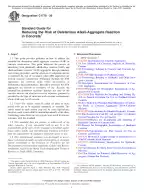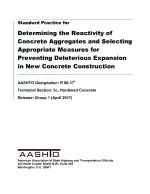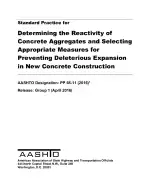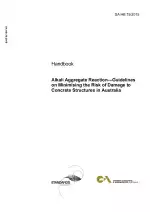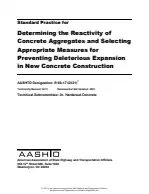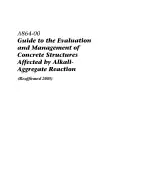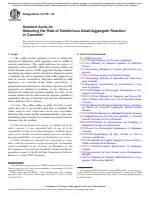ASTM C1778-20 PDF Download
Standard EN SampleStandard Guide for Reducing the Risk of Deleterious Alkali-Aggregate Reaction in Concrete
Also Known As:
The ASTM C1778-20 standard provides guidance on addressing the potential for deleterious alkali aggregate reaction (AAR) in concrete construction. AAR refers to the chemical reaction between alkalis in concrete and certain reactive aggregates, such as alkali-silica reactive (ASR) aggregates or alkali-carbonate reactive (ACR) aggregates, which can lead to expansive cracking and damage in concrete structures.
The standard highlights the importance of identifying potentially reactive aggregates through standardized testing procedures, such as petrography or laboratory expansion tests. In regions where AAR occurrences are rare or aggregate sources have a satisfactory field performance record, reliance on previous field history without further testing may be reasonable. However, in regions where AAR problems have occurred or aggregate reactivity varies, a testing program may be necessary to evaluate potential reactivity and determine suitable preventive measures.
The guide emphasizes that the level of prevention needed depends on factors such as aggregate reactivity, exposure conditions (especially moisture availability), structure criticality, and alkali availability in the concrete. The standard suggests defining an acceptable level of risk, which will influence the type and complexity of testing and the selection of preventive measures. For conventional structures, the recommended preventive measures, whether determined by performance testing or the prescriptive approach outlined in the guide, generally reduce the risk of expansion due to ASR to an acceptable level. However, for critical structures exposed to continuous moisture, more conservative mitigation measures may be necessary.
The standard also states that there are no proven measures for effectively preventing damaging expansion with alkali carbonate reactive rocks in concrete, and thus avoidance of their use is recommended. If an aggregate is identified as potentially deleteriously reactive due to ASR and preventive measures are required based on the structure size, class, and exposure condition, the aggregate can be accepted for use along with appropriate preventive measures outlined in the guide.
| Descriptors | construction, alkali-aggregate reactions, alkali-carbonate reactions, alkali-silica reaction, volumetric expansion, supplementary cementitious materials,Admixtures,Concrete,Alkali-Aggregate Reaction,Building Design and Construction,Expansion |
| ICS Codes | 91.100.30 - Concrete and concrete products |
| Language(s) | English |
| File Size | 327.7 KB |

